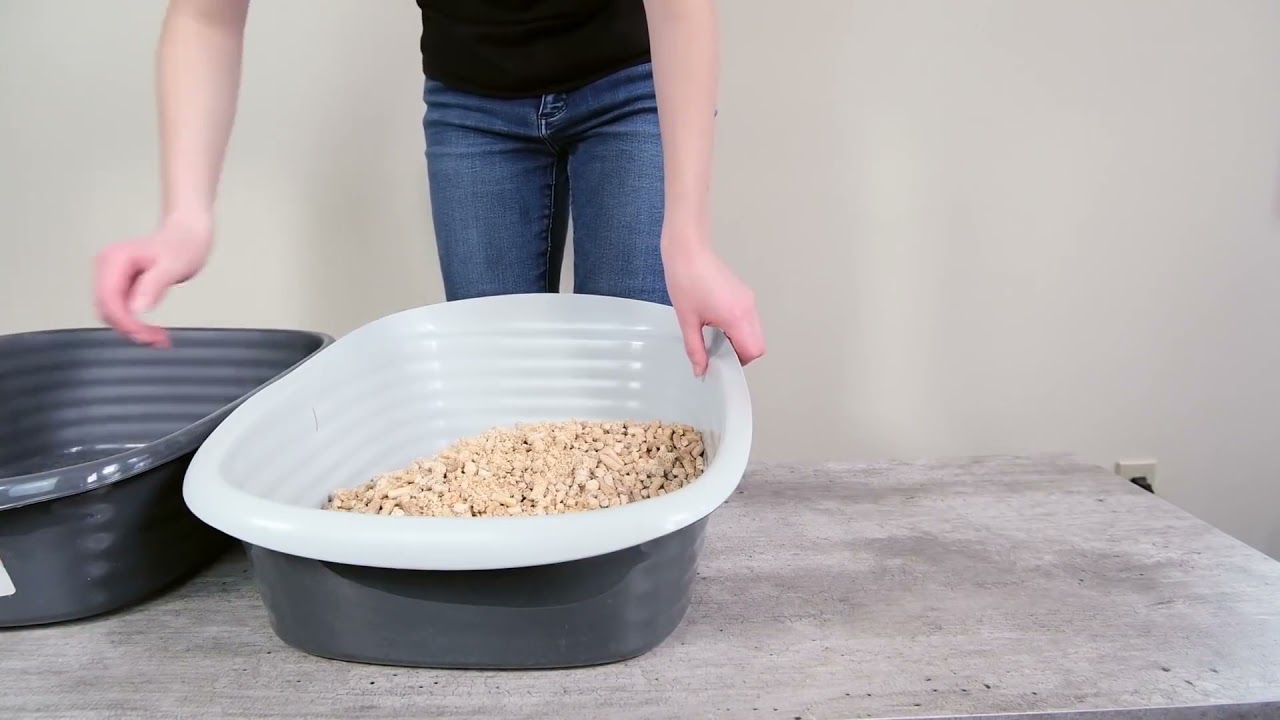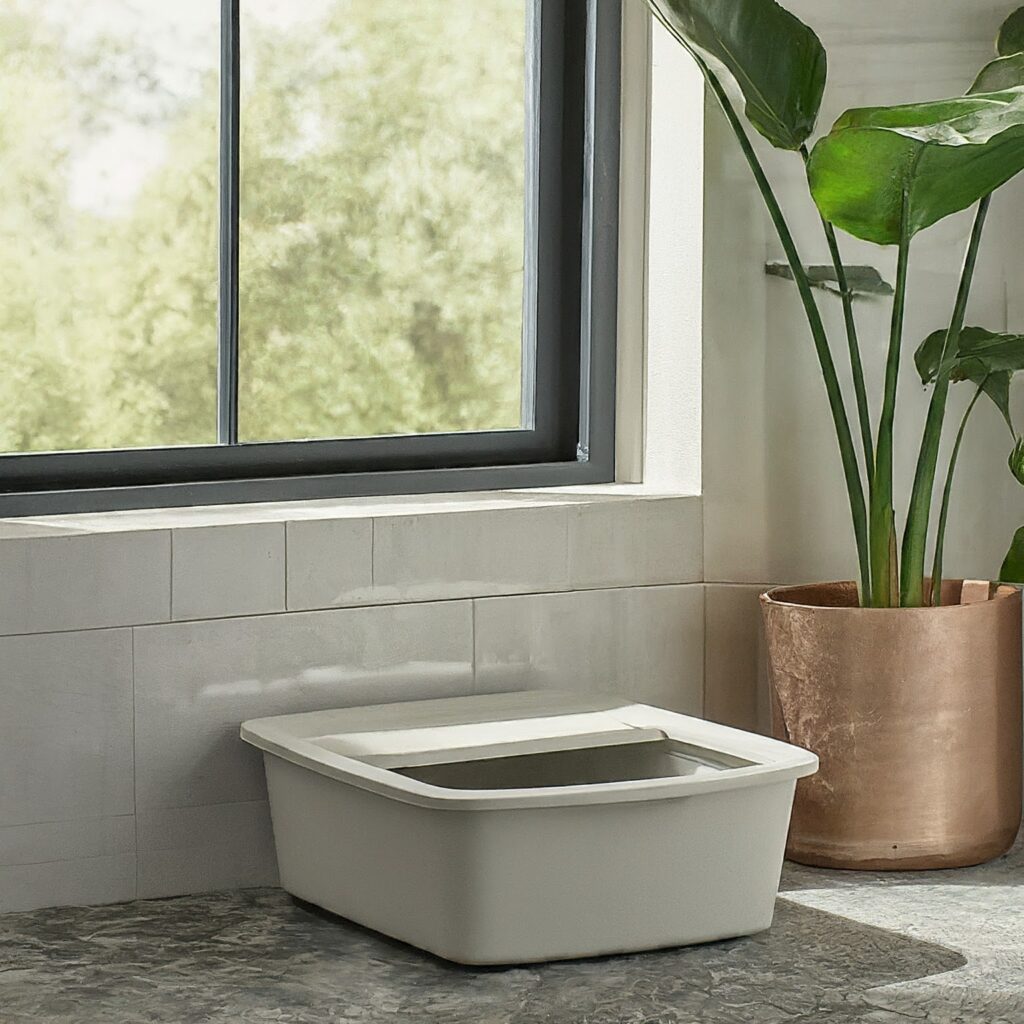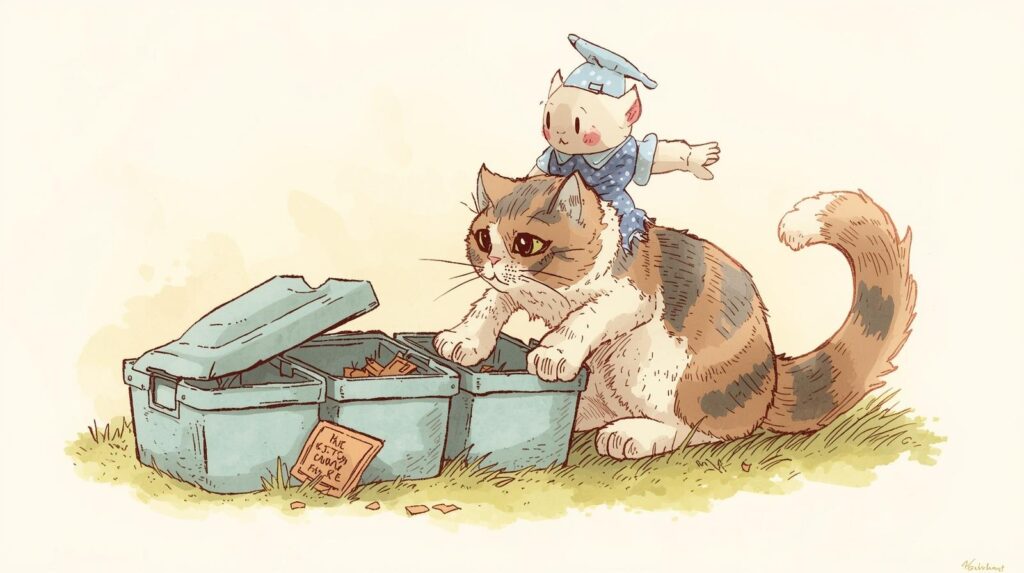
Yes, you can use equine bedding for cat litter if it’s kiln-dried and free of harmful chemicals. Many cat parents use pine pellets, straw, and other horse bedding materials to save money, reduce smell, and help the environment. But not all equine bedding is safe. This content is going to be very good for you and you can get a lot out of it. Stay tuned with us.
Here Are 3 Smart Tips Before You Try Equine Bedding:
1. Always choose kiln-dried products only
Kiln-drying removes harmful oils and phenols, making the bedding a safe alternative to litter for cats.
2. Try small amounts before a full switch
To avoid litter box issues, mix the new bedding with your cat’s current litter. This helps your cat adjust to the eco-friendly litter gradually.
3. Buy in bulk to save big
Horse bedding, like pine pellets, is sold in large bags at feed stores. This makes it an ideal choice for affordable cat litter that lasts for weeks.
Table of Contents
How to Use Equine Bedding for Cat Litter (Step-by-Step Guide That Actually Works)
Wondering how to use equine bedding for cat litter the right way without making a mess or stressing out your cat? You’re not alone! Many cat parents are searching for a practical, real-life guide that makes this affordable switch easy. Here’s exactly how to do it—safely, cleanly, and stress-free—in just a few simple steps.
Step 1: Choose the Right Equine Bedding Type
Which equine bedding is safe for cats?
- Always choose kiln-dried pine pellets or dust-free paper bedding. These are the safest and most commonly recommended by vets.
- Avoid cedar, raw pine shavings, and anything labelled with fragrances or essential oils. These can harm your cat’s lungs or liver.
Tip: Look for labels that say “100% kiln-dried,” “low-dust,” or “safe for animals.”
Step 2: Deep Clean the Litter Box First
Can I put pine pellets directly in my litter box?
Before switching, wash your litter box with hot, soapy water to remove any old litter smell or bacteria. Dry it completely before adding new bedding.
A clean start helps your cat adjust to the new texture and smell more easily.
Step 3: Fill With 1–1.5 Inches of Equine Bedding
How much horse bedding do I put in a cat litter box?
Don’t overfill! Start with a thin layer (about 1 to 1.5 inches). Pellets expand and break down into sawdust after absorbing urine.
- Too much bedding = waste and mess
- Just enough = easy cleanup and comfort
Step 4: Transition Slowly From Old Litter
How do I switch my cat to equine bedding?
Cats don’t like sudden changes. Mix 25% equine bedding with 75% old litter for the first 2–3 days. Slowly increase the ratio each day:
- Day 1–2: 25% equine bedding
- Day 3–4: 50% equine bedding
- Day 5–6: 75% equine bedding
- Day 7: 100% equine bedding
This helps your cat accept the new texture and smell without refusing the box.
Step 5: Daily Scooping – But With a Twist
How do you clean pine pellet cat litter?
Equine bedding doesn’t clump. Instead, it turns into sawdust when wet. Here’s what to do:
- Scoop out solid waste using a standard scooper.
- Shake the box gently to move sawdust to the bottom.
- Add a handful of fresh pellets daily to keep the top layer dry.
Bonus Tip: Use a double-layer sifting litter box to separate dry pellets from wet sawdust automatically.
Step 6: Full Bedding Change Weekly
How often do you change equine bedding and cat litter?
Change out all the bedding once a week, or sooner if:
- The smell returns
- The entire layer is sawdust
- Your cat starts avoiding the box
Wash the box during each full change using pet-safe soap.
What Is Equine Bedding? (And Why It’s Gaining Popularity for Cat Litter)

If you’re wondering what equine bedding is and why so many cat owners are turning to it, you’re not alone. This is one of the top-searched questions in 2025 by people looking for affordable, natural litter options.
Definition of Equine Bedding:
Equine bedding is the material used in horse stalls to soak up urine, reduce odors, and provide a comfortable place for horses to stand or lie down. But recently, this type of bedding has become a popular alternative to traditional cat litter.
Why? Because it’s:
- Highly absorbent
- Biodegradable
- Much cheaper than clay litter
- Easily available at farm/feed stores
What Materials Is Equine Bedding Made Of?
Different brands and brands use different materials. Here’s a breakdown of the main types of equine bedding that people also use for cats:
| Type of Bedding | Description | Is It Safe for Cats? |
|---|---|---|
| Kiln-Dried Pine Pellets | Compressed wood pellets, low dust, neutral smell | ✅ Yes – most recommended |
| Paper Bedding | Recycled newspaper or paper pulp, soft texture | ✅ Yes – good for kittens |
| Straw or Hay | Dried plant stalks, very natural | ⚠️ Maybe – not great for odor |
| Hemp Bedding | Made from hemp stalks, soft and absorbent | ✅ Yes – premium option |
| Pine or Cedar Shavings | Flaky wood shavings, often fragrant | ⚠️ Maybe – not great for odour |
Why Is Equine Bedding Being Used as Cat Litter?
People search for this because traditional clay cat litter is:
- Expensive
- Heavy to carry
- Bad for the environment
- Full of dust and chemicals
So, pet parents are asking:
Is there a cheaper, safer, eco-friendly way to manage my cat’s litter?
Equine bedding for cat litter fits all these needs:
- Natural and compostable
- Free from artificial perfumes
- Costs 50–70% less than name-brand litter
- Lower dust = better for cat lungs
Where Do You Buy Equine Bedding?
You can find it at:
- Tractor Supply Co.
- Local farm supply stores
- Rural King
- Online livestock retailers
Look for terms like:
- “Equine Pellets”
- “Horse Stall Bedding”
- “Pine Animal Bedding”
Always choose kiln-dried or low-dust products. These are safest for indoor cat use.
Is Equine Bedding Safe for Cats? (Vet-Backed Truth You Need to Know)
One of the most common questions pet owners ask is:
- Is equine bedding safe for cats?
- Can horse bedding harm my cat’s lungs or liver?
- What kind of horse bedding is non-toxic for cats?
This is a very important topic, because not all equine bedding for cat litter is safe. Some types are great, while others can make your cat sick.
Let’s explore the real facts, backed by vets, safety guidelines, and real pet owner experiences.
Not All Equine Bedding Is Safe – Here’s Why
Some horse beddings are made from raw pine, cedar, or scented woods. These can contain phenols and aromatic oils, which are known to:
- Irritate a cat’s lungs
- Causes allergic reactions
- Damage the liver with long-term exposure
- Trigger asthma or respiratory issues
According to vets and toxicology experts:
Cats lack liver enzymes to break down phenols. Long-term exposure to raw wood shavings can lead to serious health issues.
Safe Types of Equine Bedding for Cats
Below are the types of equine bedding that are safe to use as cat litter:
| Bedding Type | Safe? | Why? |
|---|---|---|
| Kiln-Dried Pine Pellets | ✅ Yes | High heat removes toxic oils; great odor control |
| Paper Bedding | ✅ Yes | Chemical-free, dust-free, soft texture |
| Hemp Bedding | ✅ Yes | High heat removes toxic oils; great odour control |
| Aspen Shavings | ✅ Yes (if dust-free) | Free of toxic oils, but still not ideal for long-term use due to dryness |
| Straw Bedding | ⚠️ Maybe | Natural, soft, odour-blocking, safe for cats |
Top Types of Equine Bedding You Can Use for Cats (With Pros & Cons)
Many cat parents are now exploring equine bedding for cat litter, but one of the top questions searched is:
- Which type of horse bedding is best for cats?
- What equine bedding is safe and easy to clean?
- What bedding is soft enough for my cat’s paws?
So, here’s a detailed guide to help you understand the most popular types of equine bedding used for cats, along with their advantages, disadvantages, comfort level, odour control, and safety ratings.
Equine Bedding vs. Commercial Cat Litter
| Feature | Equine Bedding | Regular Cat Litter |
|---|---|---|
| Cost | 💲 Very Cheap | 💰 Expensive |
| Odor Control | 👍 Good (pine) | 👍 Very Good |
| Clumping | ❌ No | ✅ Yes |
| Eco-Friendly | ✅ Yes | ❌ Often not |
| Dust | 🚫 Low | 🫁 Sometimes dusty |
| Availability | 🏪 Feed stores | 🛒 All stores |
Bottom Line: If you want to save money and help the earth, equine bedding for cat litter is a smart choice!
Common Mistakes to Avoid When Using Equine Bedding for Cat Litter
Switching to equine bedding for cat litter is a great idea—but only if you avoid the mistakes many new users make. These small errors can lead to strong smells, litter box refusal, or even health issues for your cat.
Here are the top mistakes to avoid:
- Using unsafe bedding types: Avoid raw pine or cedar shavings. These contain phenols that are toxic to cats. Always choose kiln-dried, unscented, and low-dust bedding like pine pellets, paper, or hemp.
- Skipping the transition period: Cats hate sudden changes. Mix new bedding slowly with your old litter over 5–7 days so your cat accepts the switch.
- Overfilling the litter box: Pine pellets expand when wet. Use just 1 to 1.5 inches to avoid a soggy mess and wasted litter.
- Not scooping daily: Even though equine bedding absorbs odor, you still need to scoop poop daily and remove wet sawdust to prevent ammonia build-up.
- Using covered or non-ventilated boxes: Pine and hemp bedding need airflow to stay dry. Use an open or sifting litter box for best results.
- Ignoring paw sensitivity: Kittens, seniors, or declawed cats may find pellets too hard. Use paper-based bedding for softer comfort.
- Buying treated or scented bedding: Avoid products with added chemicals, perfumes, or oils. They may smell nice, but they can harm your cat’s skin or lungs.
Vet Advice and Expert Opinions
Vets say kiln-dried pine pellets are usually safe for healthy cats. But avoid strong-smelling woods like cedar.
Additionally, kittens or cats with respiratory issues may require dust-free paper litter instead. Always ask your vet if you’re unsure.
As long as it’s kiln-dried and low in dust, pine equine bedding is a fine budget choice for healthy cats.” – Dr. Lisa M., DVM
Further Readings:
How to get cat to use litter box
When should cat litter be changed
FAQs About Equine Bedding for Cat Litter
Can I use horse bedding as cat litter?
Yes, many cat owners use equine bedding for cat litter, especially pine pellets. Just make sure it’s kiln-dried and safe.
What’s the best equine bedding for cats?
Kiln-dried pine pellets are best. They’re safe, cheap, and control smell well.
Is horse bedding cheaper than cat litter?
Yes! A 40-pound bag can cost just $6–$8 at a feed store.
Does equine bedding clump like cat litter?
No, it doesn’t clump. Instead, it turns to sawdust when wet.
Is pine toxic to cats?
Raw pine is toxic. But kiln-dried pine is safe for most cats.
How do I clean equine bedding litter?
Scoop poop daily, shake out wet sawdust, and do a full clean every week.
Can kittens use equine bedding?
Use soft, dust-free bedding like paper for kittens. Pellets may be too rough.
Where can I buy equine bedding for cats?
You can find it at farm supply stores, Tractor Supply Co, or online.
Wrapping up: Should You Use Equine Bedding for Cat Litter?
es, you should—but only if you choose the right type.
Using equine bedding for cat litter can be a smart, safe, and money-saving choice for many cat owners. But it’s not a one-size-fits-all solution. What matters most is choosing kiln-dried, low-dust, unscented bedding—especially pine pellets made for horses. These are commonly used and widely approved by cat parents and even some vets.
Here’s a simple breakdown of whether it’s right for you and your cat:
Choose Equine Bedding If:
- You want to save money (horse bedding is up to 70% cheaper than regular litter)
- You prefer natural, biodegradable materials
- You can scoop daily and clean weekly
- Your cat is healthy and doesn’t mind non-clumping litter
- You don’t mind a small learning curve in cleaning (like dealing with sawdust)
Don’t Use It If:
- Your cat is very picky or has soft paw pads or declawing (pellets may feel rough)
- Your cat has asthma or allergies (use dust-free paper or vet-recommended litter instead)
- You need clumping litter for medical tracking or convenience
- You don’t want to scoop daily or manage sawdust breakdown
Final Answer:
Equine bedding for cat litter is a great alternative if you pick the right type, clean it properly, and your cat adjusts well. It’s not perfect for everyone, but for many, it’s the perfect balance of price, safety, and sustainability.



